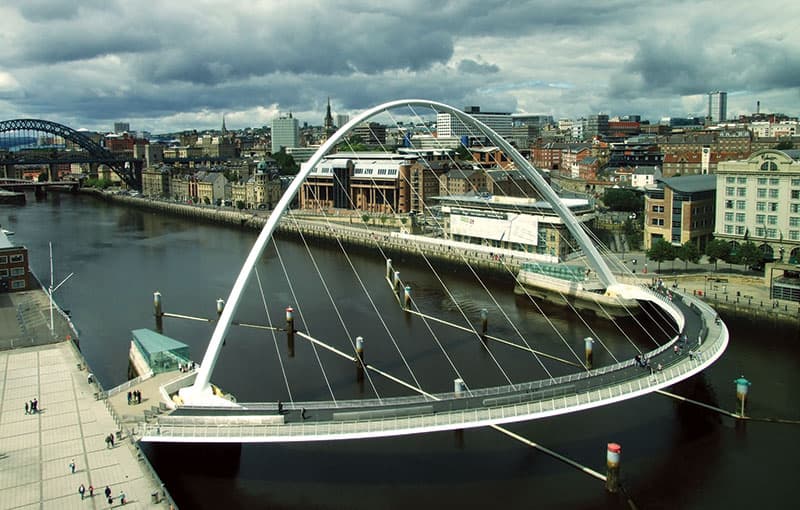Bridges in the city perform many functions, not only utilitarian. They connect transport routes separated by rivers, bays, or gorges into one whole. Bridges act as an important communication link, uniting communities that previously lived independently.
At the same time, bridges are an important element of the urban landscape, creating a unique appearance of the city. The famous Brooklyn Bridge, Sydney Harbor Bridge, Golden Gate Bridge, and other masterpieces of engineering and architectural genius amaze people and inspire them to great achievements.
Therefore, city authorities, businesses, and citizens are interested in ensuring that the bridges in which they invest their money are not only wide and reliable but also beautiful. Only in this case will they be recognizable worldwide, and the city will receive additional flows of tourists. What will the bridges of the future be like? What new things can specialists offer so that the bridge they build could amaze the public?
Rethinking the Place and Role of the Bridge in Urban Infrastructure
The urban space of a modern city is becoming multi-layered. The growing population of cities and constant traffic jams are stimulating the search for new solutions that could create alternative trajectories for movement in urban space. This is why the cities of the future will have many more bridges. If bridges today are built mainly to overcome water barriers, gorges, and create convenient transport interchanges, soo,n they will be everywhere:
- The bridges will connect skyscrapers, allowing residents to quickly and comfortably move between office buildings.
- The bridges will be built as observation platforms to support tourism infrastructure.
- The bridges will become special park areas, allowing rising above the bustle of the city into a green area even in the most intense city traffic.
Bridges Will Change the Value of Housing Stock
Living on lower floors in apartment buildings is considered more prestigious not only because a person feels more confident on the ground. In such conditions, a person is much closer to the transport infrastructure than residents living on the 16th or 25th floor. Now, imagine that in the cities of the future, transparent safe bridges will connect skyscrapers at different levels, for example, the 20th floor, the 40th floor, etc. Thus, people living high up will be able to easily travel around the city, virtually by air, admiring the beautiful views.
Therefore, if you have an apartment high above the ground, do not rush to sell it; perhaps very soon the prices for such housing will skyrocket. Today, such apartments are cheap; they are usually bought by people who cannot afford a more prestigious alternative. With the help of the FCLOANS online for bad credit, they balance their expenses and look for the most economical housing option. But the time will come, and thanks to bridges, life on high floors will become more attractive. Just imagine how many amazing impressions a person who travels to their office across a transparent bridge will get!
Sky Pool Bridges
A few years ago, the world’s first swimming pool bridge was built in London. It connects two 10-story buildings. Residents, architects, and developers liked the idea so much that other bridge design teams adopted it. For example, in Saudi Arabia, they announced the start of construction of a 450-meter-long bridge, which will be both a hotel and a swimming pool.
When the algorithms and technologies for constructing such masterpieces become widespread, this will be a general trend. Developers understand that such an element in a residential complex will significantly increase the price of apartments. And even if residents would then be able to use this bridge pool for free, as in London, they would first have to pay a much higher cost for an apartment.
Bridges have a bright future because modern lightweight yet high-strength materials will allow them to be built in various places. Ideas embodied in the construction of bridges in one country are quickly picked up by architects and engineers and spread throughout the world. Thus, bridges will become a vital step into the future, which will be actively used by humanity on earth and in the air.




